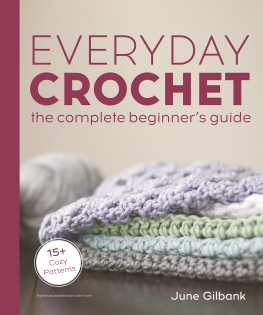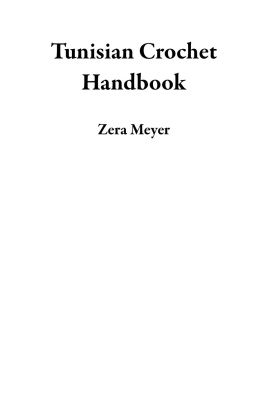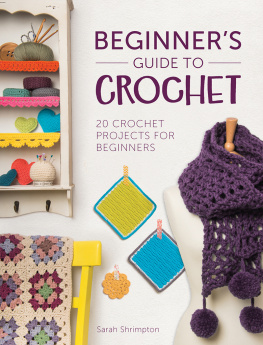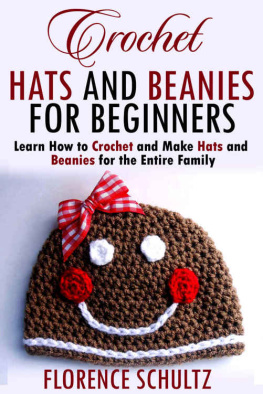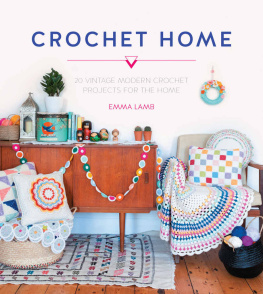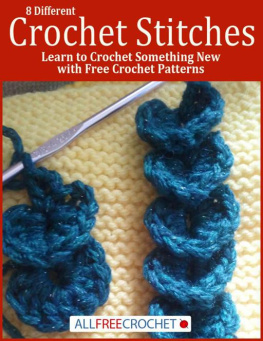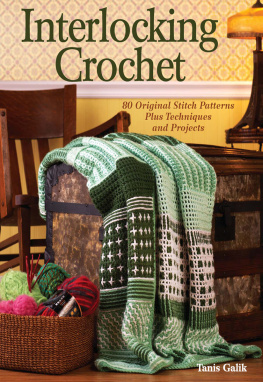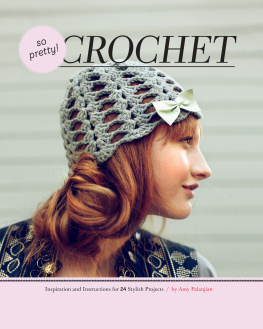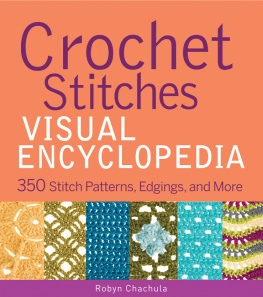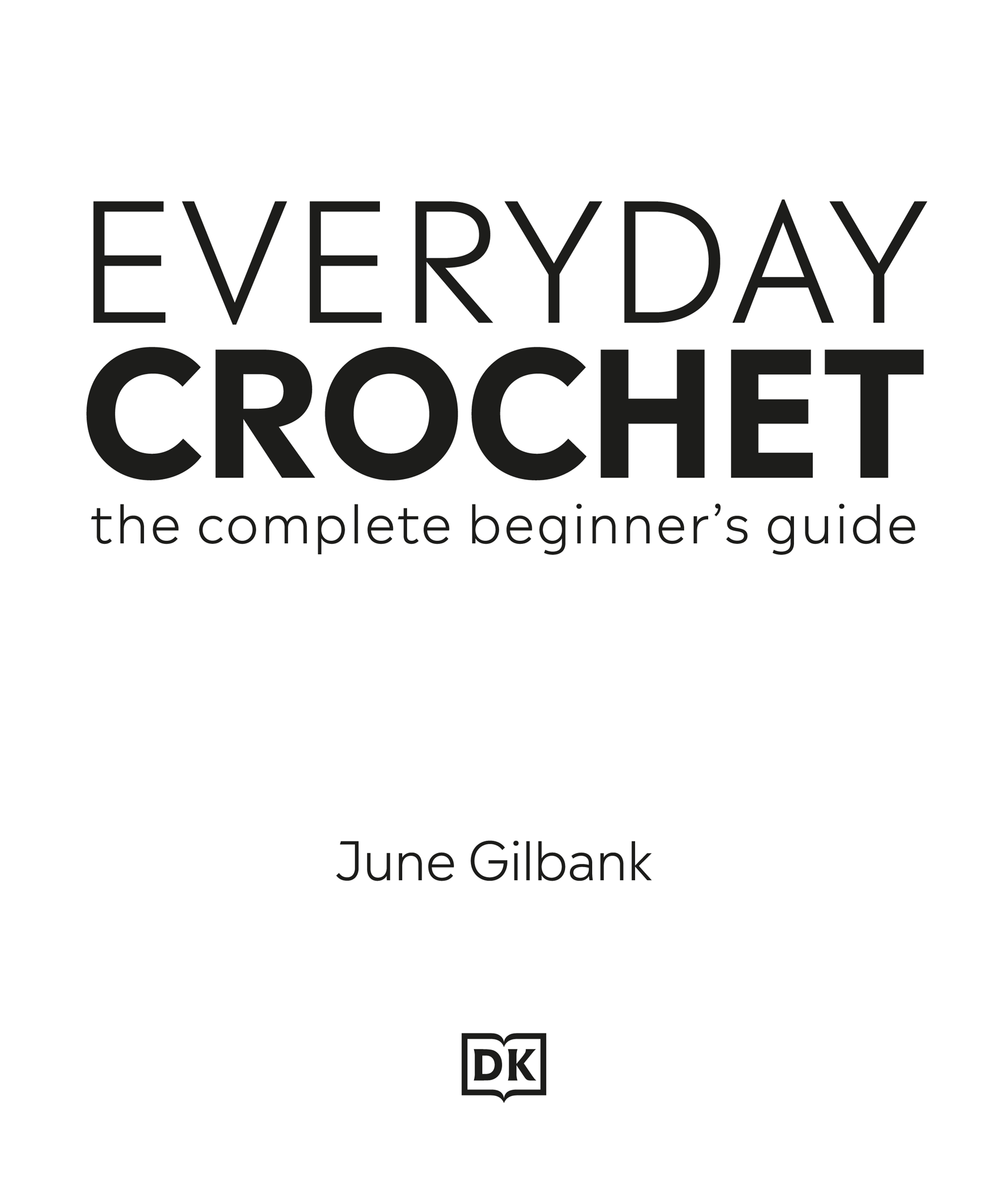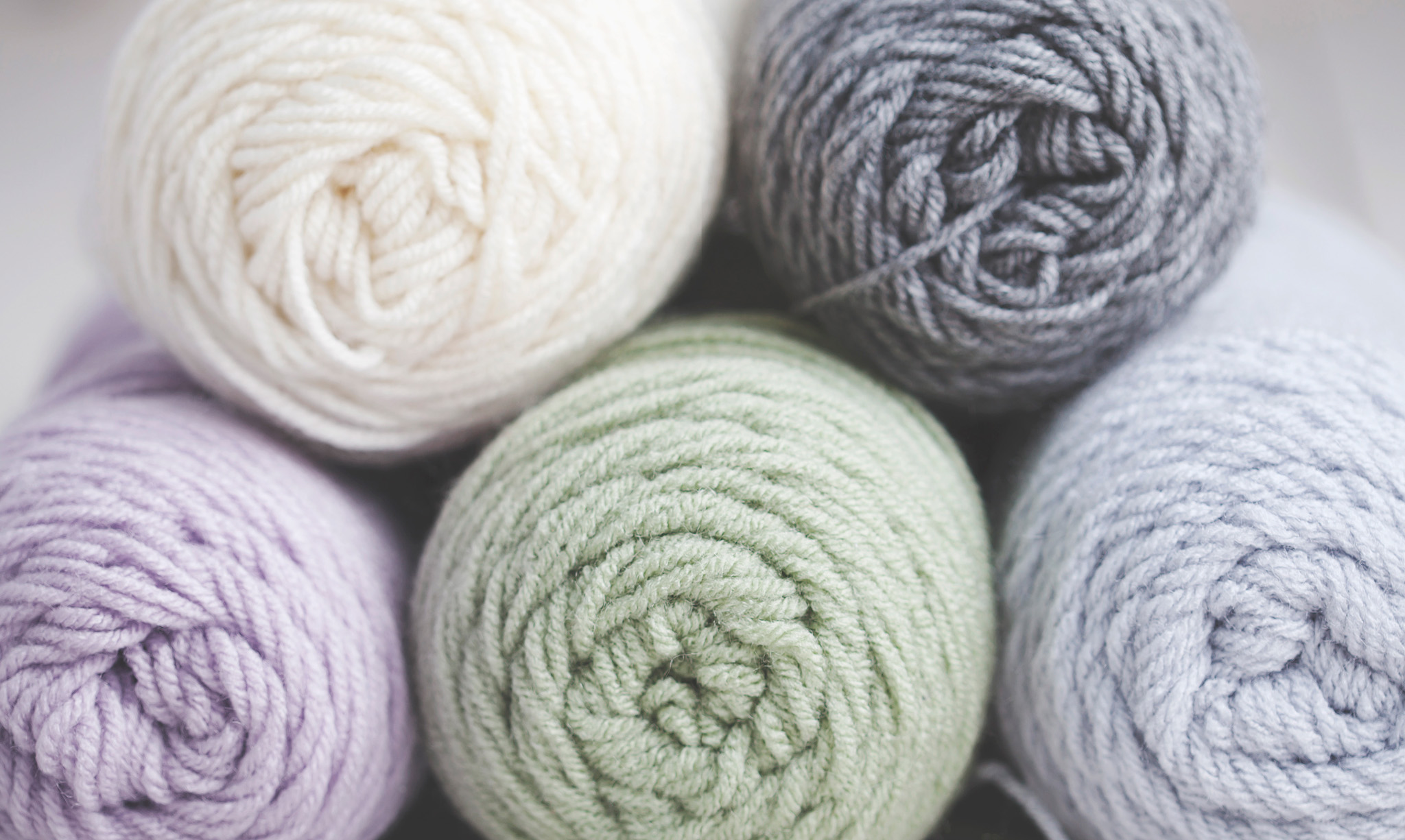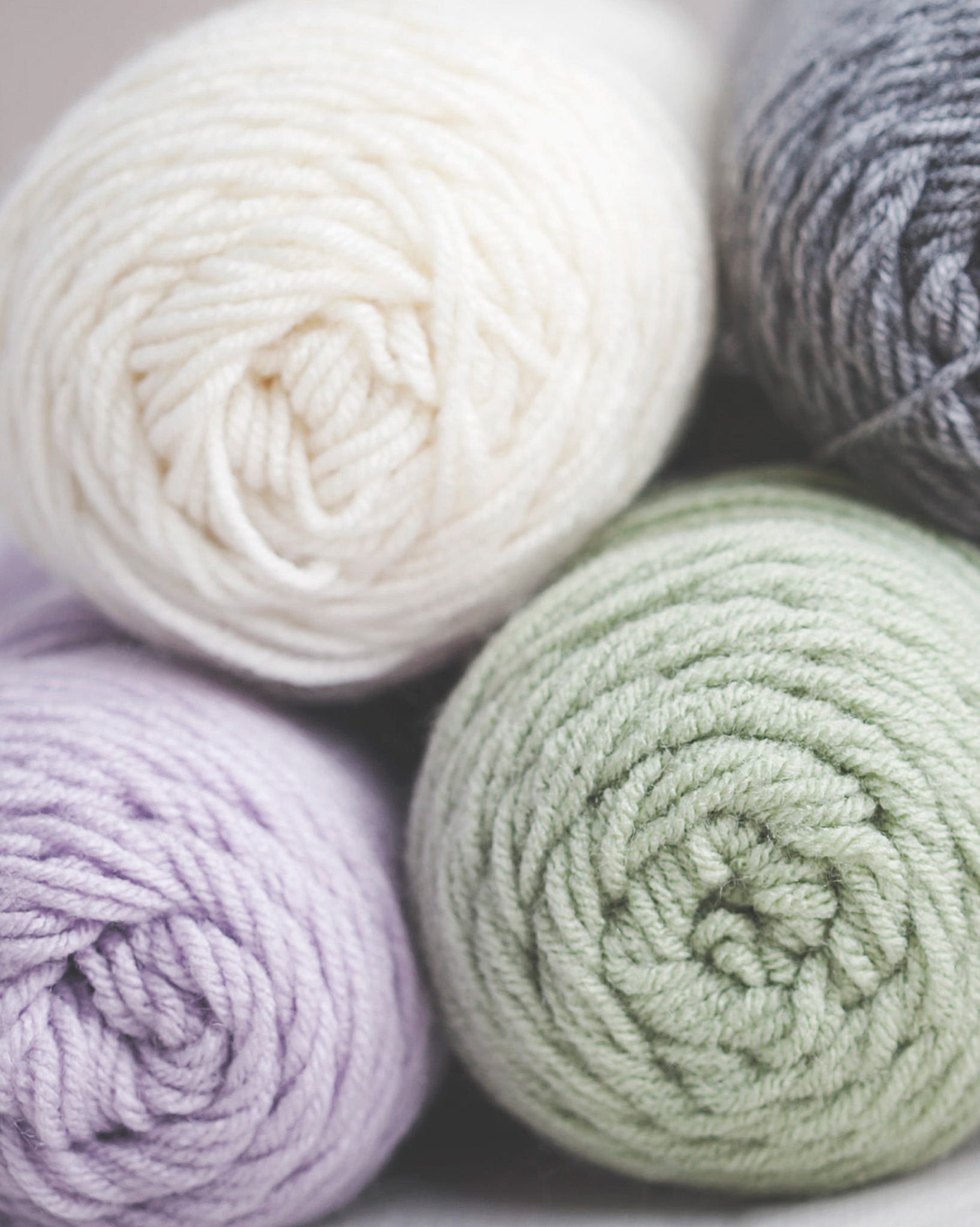CONTENTS
Contents
g
How to use this eBook
Preferred application settings
For the best reading experience, the following application settings are recommended:
- Orientation: Portrait
- Color theme: White background
- Scrolling view: [OFF]
- Text alignment: Auto-justification [OFF](if the eBook reader has this feature)
- Auto-hyphenation: [OFF](if the eBook reader has this feature)
- Font style: Publisher default setting [ON] (if the eBook reader has this feature)
- In Settings, change the font size to a size you are most comfortable with.
- Double-tap image to see the details clearly.
g
Introduction
Ever since I started creating and publishing my crochet designs at PlanetJune (planetjune.com), Ive loved discovering and sharing new things about my craft with others. For me, the best thing about crochet is its versatility. Its pretty amazing that with just a hook and a ball of yarn, you can combine a few simple stitches into infinite shapes and textures. From those, you can crochet a huge variety of itemsfrom blankets and toys to garments and accessories.
How to Use This Book
Even if youve never before taken hook to yarn, you can learn how to crochet. In these pages, I teach you how, starting from the very basics, with tons of tips for making the learning process easier. Lots of close-up photos guide you through every stitch and technique. For complete beginners, Ive created the clearest, most comprehensive learn-to-crochet tutorials. For those looking to improve their skills, Ive distilled all the knowledge and tips Ive picked up over my crocheting life into these pages. To help you put into practice everything youve learned, Ive also included a collection of fun and stylish patternsI hope you try them all!
Learning to crochet shouldnt be a struggle but rather an easy, fun, gradual progression that builds from absolute basicsand thats what I set out to create with Everyday Crochet.
This is the book I wish Id been given when I was learning to crochet and I hope youll find it a valuable resourcewhether your goal is to learn to crochet, improve your crochet know-how, or find fabulous new designs to crochet.
If youre new to crochet, I recommend you work through Part 1 page by page. Then, as you learn more techniques with each new chapter, try out the practice projects to put what youve learned into action. If you get stuck at any point, flip back for a quick refresher or make use of the helpful appendixes at the end of the book to find what youre looking for. With each chapter, project, and pattern, youll learn something new you can take forward into your future crochetingand grow in skill level and confidence.
As you follow along with the lessons in this book, starting with the most basic stitches as you crochet your first simple (but useful!) washcloth, youll be building skills so you can crochet beautiful hats, scarves, bags, lacy shawls, and morearmed with nothing more than your trusty crochet hook and a ball of yarn!
g
Part 1 The Basics | CONTENTS
g
Chapter 1: Before You Begin | CONTENTS
IN THIS CHAPTER
g
Choosing Your Yarn
One of the many nice things about crochet is the wide variety of yarns you can work with. However, with so many choices, it can be overwhelming!
So which yarn should you use, especially when youre new to crochet? A smooth yarn that feels good in your hands is the best choice when youre just starting. Choose a plain, soft yarn in a color you love, but avoid very dark colors at first. Your stitches will show more clearly with lighter-colored yarn. Novelty yarns with loops, bobbles, fluff, or glitter might be tempting right now, but theyre more difficult to work with because the texture obscures your stitches. Wait until you have a thorough grasp of the basics of crochet before you attempt to work with one of these yarns.
Whatever yarn you choose, it will likely come wound in a skein, ball, or hank, most often with a paper ball band surrounding it. The ball band contains useful information about the yarn, including its weight, fiber composition, yardage, care instructions, and more.
You can crochet using the yarn tail found on the outside of the skein or fish out the tail from the middle of the skein (a center-pull skein). Some higher-end yarn is packaged in a hank a large loop of yarn twisted into a coil. To avoid tangles when you crochet with a hank, undo the twisted coil and hand-wind the yarn into a ball or use a yarn winder to wind it into a center-pull skein.
Yarn Weights
The weight of a yarn refers to its thickness, not the weight of a ball or skein. Yarn varies in thickness from very thin lace weight (which you can crochet gossamer-fine shawls with) to super bulky (which is more suited for thick blankets and oversized chunky scarves) and every thickness in between. Lighter yarns need smaller hooks and take more stitches and rows to produce the same-sized piece of crocheted fabric youd get with a heavier yarn paired with a larger hook.
When youre just beginning to learn to crochet, a medium-weight yarn is a good choice. Perfect for a wide range of projects, its thick enough that you can easily see your stitches. Look for a worsted weight yarn . Depending on the manufacturer, it could also be called medium , #4 , aran , or 10-ply .
Yarn Fibers
Yarn can be made from plant fibers (such as cotton, linen, and bamboo), animal fibers (such as wool, alpaca, mohair, and angora), and man-made fibers (such as acrylic, nylon, and microfiber).
Cotton is strong, inelastic, and absorbent, which makes it a good choice for kitchen and bathroom items, such as dishcloths and washcloths. Mercerized cotton has been processed to make it strong, smooth, and shiny, but its also less absorbent.
Wool is light and stretchy and makes warm winter clothes. Check the care instructions carefully; most wool shrinks when washed. Superwash wool has been treated so it can be machine washed without the fibers felting or binding together.
Acrylic is inexpensive and easy to care for, but it cant tolerate heat. Its often available in a wide range of colors that make it particularly suitable for blankets and toys.
Yarn can also be produced from a blend of fibers, which combines the properties of each. For example, acrylic can be added to cotton to give it some stretch or added to wool to make it washable.
How Much Yarn Do You Need?

